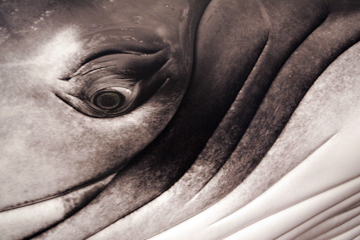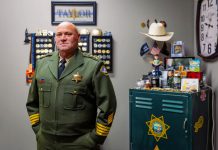
Monterey’s museums, historical buildings, wharfs and of course,
salt water taffy are all part of a great family getaway
Whenever I tell my daughters we are going to Monterey, their
response is always
”
Yes! We are going to the aquarium!
”
Monterey’s museums, historical buildings, wharfs and of course, salt water taffy are all part of a great family getaway
Whenever I tell my daughters we are going to Monterey, their response is always “Yes! We are going to the aquarium!”
Don’t get me wrong – I love the aquarium, and it is one Monterey’s better known attractions. But there are plenty of things to do there without spending an entire day, or a lot of cash, in the same place each time you visit. After all, Monterey dubs itself as the most historic city in California, and in one fairly central location, visitors can check out works of art, see a copy of the state’s constitution (which was drafted in Monterey), walk through an old cemetery and watch sea lions playing in the marina. I figured it was time for the girls to realize just how lucky they are to live so close to one of the state’s most beautiful spots.
We arrived in Monterey shortly before noon on what turned out to be a gorgeous, albeit cold, Saturday morning, armed with maps to three different museums. The goal was to visit as many museums and historical points of interest as we could before our legs and my money gave out.
Our first stop was the Monterey Museum of Art La Mirada. The MMA has two locations, but we started with the one on Via Mirada for two reasons – it was a little more removed from the other spots on our self-created tour and it is currently home to an exhibit featuring large-scale underwater photos of humpback whales.
Before we even stepped out of the car, we were treated to sights of beautiful gardens and the Monterey Bay. MMA La Mirada is located in one of Monterey’s oldest neighborhoods, and the building itself is a modest stone adobe from the 1800s. Around 1922, the adobe was remodeled into a modern residence, and soon became a retreat for the rich and famous – Elizabeth Taylor and Richard Burton stayed at La Mirada in 1962. It was donated to the MMA in 1983, and today features four galleries within the still elegantly furnished home.
Our favorite exhibit at La Mirada was “Into the Deep,” which showcases huge images taken by photographer Bryant Austin, who spent the last few years studying humpbacks in the Kingdom of Tonga, just south of Western Samoa. What helps make the exhibit cool is the incorporation of moving images on a huge wall screen and a sound system which continuously plays whale songs. We found the exhibition both uplifting and peaceful, and it was a great way to relax a bit after the car ride from Hollister.
Another exhibit we enjoyed at La Mirada was “Earth, Water, Fire and Forge: Asian Vessels from Antiquity to the Modern Era.” This collection was mind-boggling, as it features Asian ceramics which date hundreds of years before the birth of Jesus Christ. A third exhibit, titled “Painting in the 90s,” was a little too out there for the girls – at 10 and 12 years of age, they prefer landscapes and people to the abstract styles on display in this collection.
We were allowed to tour the entire building, as well as the outdoor gardens, the perfect site for a summer wedding (the museum offers a complete range of wedding services). The girls enjoyed picking up petals that had fallen to the paths, and looking at the ocean view across the way.
Admission to the museum is a bargain – $5 for adults, $2.50 for students and children under 12 are free – and your ticket gets you into both MMA locations.
From La Mirada, we drove to the museum’s second location on Pacific Street, which just happens to be across the street from Colton Hall, the site of the California Constitutional Convention in 1849. We decided to check out Colton Hall first, which is home to a museum dedicated to Monterey’s history. An extremely helpful and friendly docent showed us around the upstairs portion of the hall, which features displays of books, quills, a copy of the signed California Constitution, old maps and even a first edition of Mark Twain’s “Huckleberry Finn,” which impressed my 10-year-old greatly. Much like Hollister, Monterey’s city offices are spread out, and many are housed in the historic buildings and adobes dotting downtown. Colton Hall has continuously operated as a public building since it first opened in 1849, and has housed courts, a school and a hospital.
We went downstairs and walked through the old jail, constructed in 1854 and used for more than 100 years. It was very cold and damp, and the girls were a little spooked by the idea that some of the criminals housed in the jail were killed inside by vigilantes before their trials. It didn’t stop them from taking pictures of each other in front of the cells, however.
Our family really enjoys history (we watch a lot of the History Channel), so hearing the stories of old Monterey were especially enthralling. It is fun to imagine what life was like back then. We did a bit of the walking tour, stopping to look at various adobes and gardens. There is no charge to walk through the Colton Hall museum, and all Monterey State Historic Park tours are free on a first-come, first-serve basis.
Next, we went to MMA Pacific Street, where a photo exhibit of Elkhorn Slough, one of my youngest daughter’s favorite spots, is now on display. The Pacific Street location is larger than La Mirada, but we preferred the ambiance of La Mirada. Pacific Street features eight galleries devoted to exhibitions of American art, early California painting, photography, and contemporary art. The Elkhorn Slough display features photos taken in the 1980s by Michael Kenna, and we really liked seeing different views of the slough. Another exhibit we enjoyed was in the museum’s youth gallery, and featured original illustrations from Belle Yang’s popular children’s book “Always Come Home to Me,” a story of two children growing up in China.
We got back into the car and parked in the Fisherman’s Wharf lot, then walked over to the Maritime Museum of Monterey, which opened in October 1992 after being housed in the basement of the MMA for 19 years. Today the Maritime Museum holds almost 6,000 artifacts, more than 50,000 photographs and 6,000 books and papers in the collection. This museum was my youngest daughter’s favorite. She was fascinated by items salvaged from a long ago shipwreck off the Monterey coast, as well as items detailing the history of both the sardine and abalone industries. There were a dozen or so paintings on display of scenes such as Mission San Juan Bautista or the Lone Cypress, and even the diary of an old abalone fisherman.
By far the most awesome items on display at the Maritime Museum are the 580 glass prisms of the historic Fresnel lens from the Point Sur Lightstation, which illuminate the museum and its seven exhibit areas. There were buttons the girls could push which sounded the fog horn and the air signals used at the lighthouse, and the girls were so excited by this they made me grab a brochure for the lighthouse for a future adventure. Admission to this museum is free, although donations are accepted.
By now we had worked up an appetite, so we headed off to Wharf 2, where you can see people fishing off the pier. We had been told of a little diner called LouLou’s, which has a reputation for great burgers. But LouLou’s only serves breakfast and lunch, which we had missed. So we headed back to the main wharf. At first, the girls were worried, because naturally, most of the restaurants on the wharf specialize in seafood, and none of us like seafood. But we found the perfect little place, called Cabo’s Wild Mexican Seafood, housed in the back of a waffle cone shop. In spite of its name, the menu featured a good selection of traditional diner food, such as sandwiches, burgers, hot dogs and even fried chicken. We had bacon cheeseburgers, fries and some of the best onion rings we’d ever tasted while watching sea lions sun themselves on rocks in the marina and singing along to golden Oldies music by artists such as Elvis Presley, Buddy Holly and Jerry Lee Lewis.
Afterwards, we walked along the wharf, treating ourselves to a bag of salt water taffy and some rock candy. We ended the day down at the beach, picking up sea glass and tiny shells. We walked along the marina on our way back to the car, and spotted several jelly fish floating in the water.
We headed back to Hollister munching on taffy and talking about the day. The girls really enjoyed seeing the exhibits at the museums, and we managed to have a full day of fun for around $70, a great deal in my book. We spent the day talking, laughing and sharing, another benefit of going to places that stimulated their creativity. I have already been asked when we can go back, and the best part? Going to the aquarium never came up.
By the Numbers
$10 – Admission to the Monterey Museum of Art for one adult and two students. Children under 12 years of age are free
$2 – Price of a really cool map of the California/Oregon/Missouri territories with state boundaries displayed purchased from the Colton Hall Museum
$3.75 – Cost of parking at Fisherman’s Wharf for 2-1/2 hours
$43.75 – Total for three bacon cheeseburgers, one roast beef sandwich, four sodas, one basket of fries and a basket of onion rings at Cabo’s Wild Mexican Seafood on the wharf
$19.95 – Price for 3 lbs. of salt water taffy









